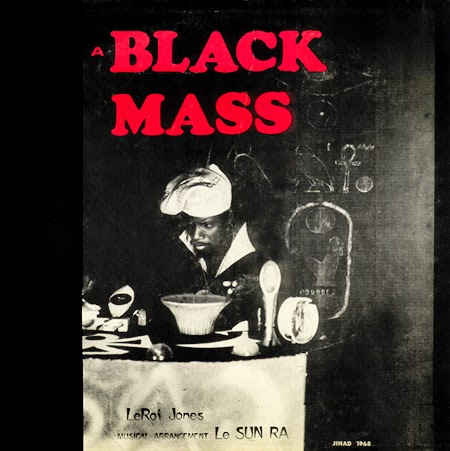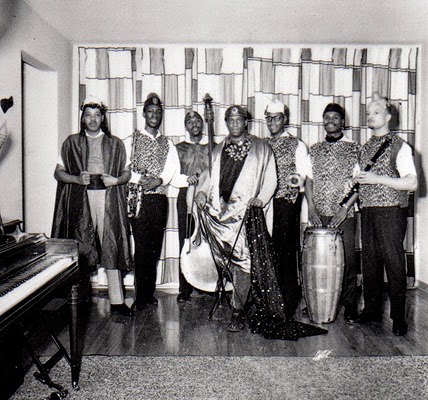Black Students Union leaders at San Francisco State University, Jerry Varnado and Jimmy Garrett
The Black Student Union at
San Francisco State University
was the first at any school anywhere. Its official history has not yet
been written, but the oral history is being kept alive by two men in
their mid-60s talking about the mid-'60s.
They are
Jimmy Garrett and
Jerry Varnado,
who cooked up the concept - a college advocacy group that would work
toward civil rights everywhere - and barnstormed it around to other
colleges and high schools. The pair met as undergraduate activists in
early 1966 and met most recently at Garrett's house a few doors off
Martin Luther King Jr. Way in North Oakland.
"We did manage to play a role in a broader movement," says Varnado, a
retired attorney who lives in the Oakland hills. "There are
Black Student Unions all over the world. I went to the
London School of Economics to visit the Black Student Union."
"The group at San Francisco State is the first that we know to use that term," says
Akinyele Umoja, associate professor of African American studies at
Georgia State University in Atlanta and a leader at the
National Council for Black Studies. "Later on, there was a conference in California where black students at other campuses all adopted that name."
It
was more than a name, and the lasting acronym BSU. "That activity that
they were leaders in didn't just shift San Francisco State. It shifted
the access and the academic context of every university in the country,"
says
Kenneth Monteiro, dean of the
College of Ethnic Studies at San Francisco State.
The first and still the only academic department of its kind in the
country, the College of Ethnic Studies is celebrating its 40th
anniversary this school year. The College of Ethnic Studies came out of
the black studies department, which came out of the famed student strike
of 1968-69, which came out of the BSU, which came out of a wager that
Garrett made in Los Angeles shortly after the Watts Riots of 1965.
A winning bet
"The
bet was that you could build a black student movement on a
predominately white campus," says Garrett, 67, also a lawyer and the
retired dean of instruction at
Vista Community College (now Berkeley City College). "That was a bet that a couple of people in SNCC (
Student Nonviolent Coordinating Committee) made. I bet that it could happen."
In
his early 20s, Garrett was already a veteran Freedom Rider and youth
activist. He came to San Francisco because he had family here, and he
came to S.F. State specifically to organize. Being enrolled in classes
was mainly a way to avoid Vietnam.
"When I got to San Francisco
State, I did an analysis," says Garrett, who broke the black student
population into three categories: the
Negro Student Association (NSA), an organized club inclusive of all black students; the fraternities and sororities; and the radical Black Nationalists.
"Then there were people like me who didn't know what they were," Garrett says. "Whatever I was, it wasn't one of those."
Strategy sessions
Varnado was one of those. A 21-year-old freshman from segregated Mississippi, by way of the
Air Force,
he was chapter president of Alpha Phi Alpha, a black fraternity, and
active in the NSA. He may have met Garrett at a party at the frat house
on Capitol Avenue in the Ingleside district, but he isn't sure. They
started having strategy sessions in a corner of the campus library. Two
became three. Three grew to five, then to eight.
Whatever
it was they were on to, it needed its own name, and that took two or
three weeks of meetings to settle. Otherwise, there were no membership
rules or bylaws or articles of incorporation filed in the student
activities office.
"We didn't plan all this stuff," Varnado says. "It just started happening and it grew."
According
to "Blow It Up!" Dikran Karagueuzian's account of the 1968 campus
revolt, the name Black Student Union was attributed to a student named
Tricia Navara. The book suggests that it was just a matter of renaming the NSA, which is the way Varnado and Garrett tell it.
"For
all practical purposes, the BSU and the NSA were the same," says
Varnado. But Dean Monteiro says that the BSU formed as a wholly separate
entity.
"That was a tough moment," says Monteiro, who was too
young to be there but has studied the chronology. "The Negro Student
Association was not moving along as if it needed to be defunct."
But it couldn't keep up with the BSU under Garrett, who "soon moved into
politics and made the BSU the most powerful pressure group on campus,"
according to "Blow It Up!"
"Our thing was not simply to
understand the world. Our duty was to change it," Garrett says.
"Everybody on the campus who identified themselves as a black person,
whether they were a student, faculty, worked in the yards, you were a
member of the Black Student Union by definition."
Garrett was the
first chair, and Varnado was the on-campus coordinator. Word got
around, and soon their expertise was being sought at other campuses.
"We
had a student who called us from Stanford and he said, 'There's only
six or seven of us, can we set up a Black Student Union?' " Garrett
says. "We worked at every institution that would open space for us:
community college, high school, elementary school."
College outreach
Within
a year, the BSU was at every state college in California. There were
BSU sweatshirts, BSU dances, but the most important aspect was the BSU
outreach into high schools with tutorials and college prep programs.
"Having the name Black Student Union, we were not afraid to go to the
ghetto. We were not afraid to go to Hunters Point," says Varnado. "We
tried to recruit students to come to college. We wanted them to join the
BSU also, but the primary reason was for them to get an
education."
The
BSU pressed campus administrators for a more liberal admissions policy.
A year after its launch, the black population at San Francisco State
had doubled, Garrett says, and a year after that, it doubled again.
"Enrollment was increased and many lives were changed because of the
outreach they did," says Umoja of the National Council of Black Studies.
"BSUs in the late '60s and early '70s provided a key role for tens of
thousands of black kids in the United States."
Much of that was
the result of the student strike to institutionalize minority
curriculums. The walkout started Nov. 6, 1968, and ended March, 21,
1969, making it the longest campus strike in U.S. history. By then,
Garrett had moved on toward graduate school in the East, but Varnado
wasn't going anywhere. He liked S.F. State so much that he changed his
major to prolong his undergraduate career.
During the strike, he
was arrested many times and ended up spending a year in County Jail. But
it ended well. He proceeded directly from jail to law school at
Hastings, though he doesn't recall ever filling out an application. That
was the power of the BSU at S.F. State.
A new plaque
If
you go out to the Outer Sunset campus looking for the history of the
BSU, you won't find much. There is the BSU headquarters in Cesar Chavez
Student Center, and there is a commemorative rock hidden in the Quad
with a plaque that vaguely honors the strike but doesn't mention the
BSU.
Next month, a historic plaque that speaks specifically to the
BSU and its sister in arms, the Third World Liberation Front, will be
mounted in the front lobby of the ethnic studies building.
Garrett and Varnado will be proud to see it, but they're more proud of what stands behind it.
"I'm
just happy that the ethnic studies department is still in existence at
San Francisco State," Varnado says. "It's beyond anything that I could
have imagined."
Garrett breaks it down to numbers: "Six thousand students take those courses every semester."



































.jpg)














